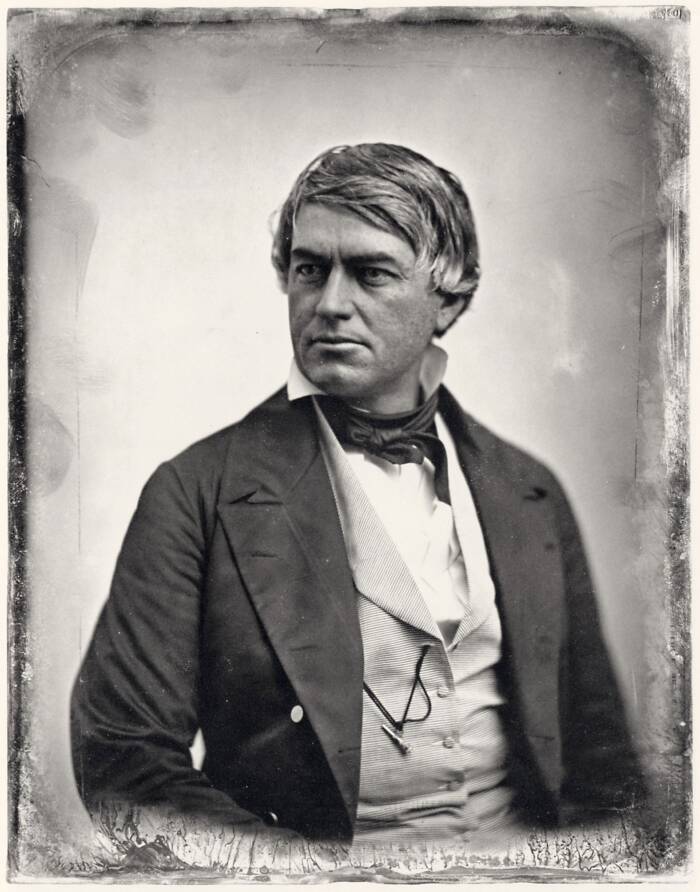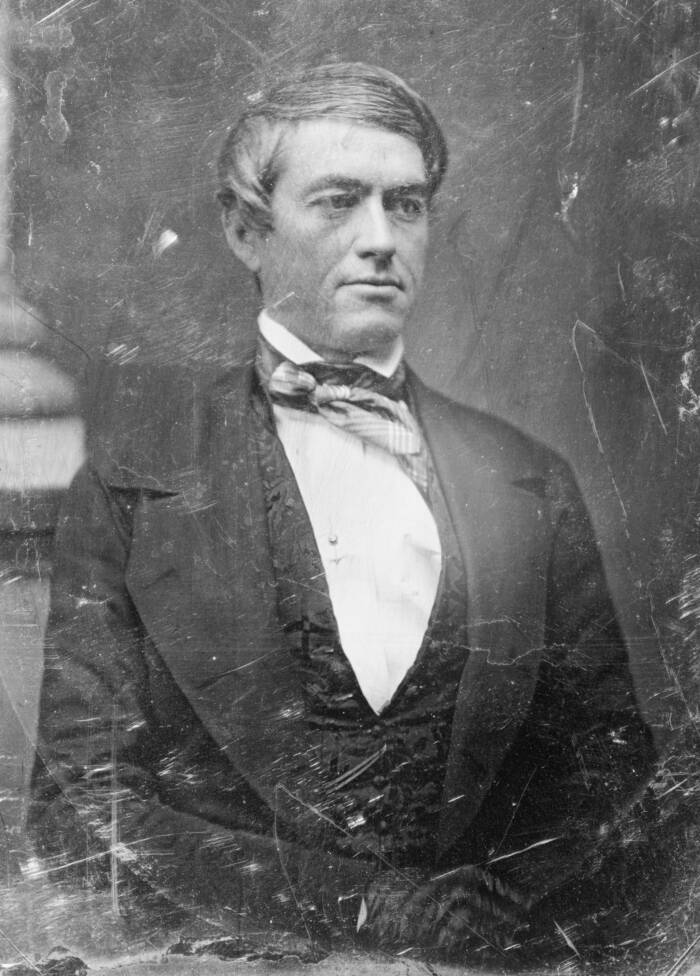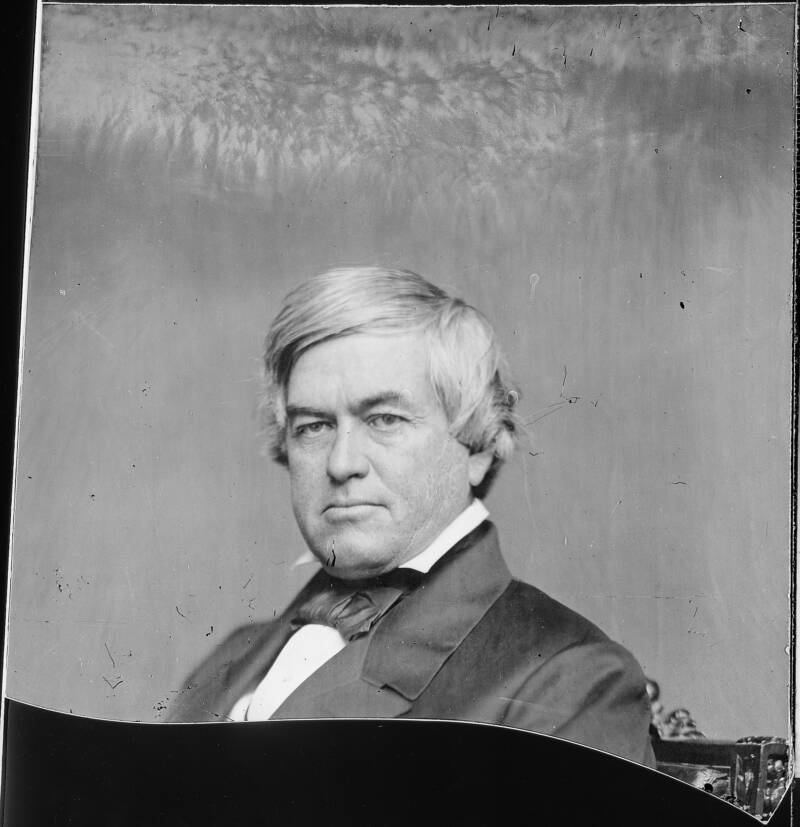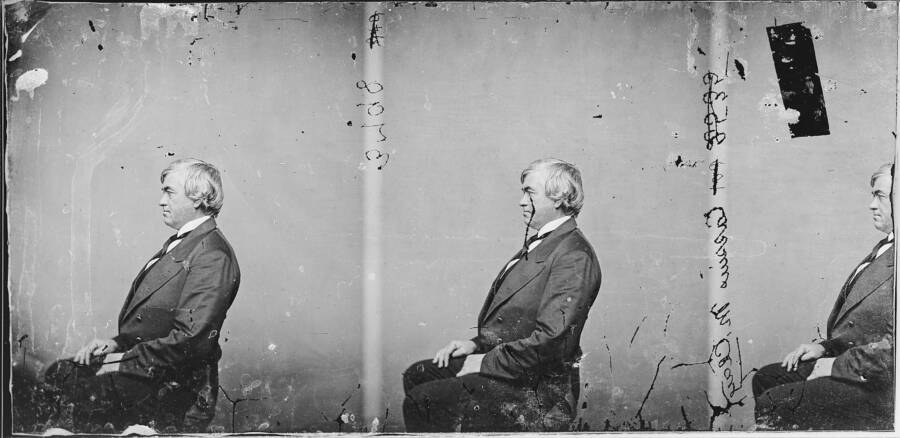Despite being born into a family of wealthy enslavers in Kentucky, Cassius Marcellus Clay became a fierce abolitionist, fighting his many enemies with words and a Bowie knife.

Wikimedia CommonsCassius Clay fought for emancipation, often putting his life at risk.
Born into a powerful Kentucky family that made its riches through slavery, Cassius Marcellus Clay was one of the most prominent white Southerners to advocate for abolition in the 19th century. But fighting against slavery in the American South earned the politician many enemies.
In 1843, a gunman hired to assassinate Clay shot him in the chest — and the politician only survived because the bullet hit the Bowie knife that Clay had just drawn in defense. Even after being shot, Clay attacked the gunman, slicing off his nose with the very knife that stopped the bullet.
Throughout his career, Clay faced down several more death threats, started an anti-slavery newspaper, and even helped convince Lincoln to issue the Emancipation Proclamation. And as America’s ambassador to Russia, he helped shape the course of the Civil War.
But who was Cassius Marcellus Clay?
Cassius Clay’s Early Years
A family of enslavers, the Clays of Kentucky owned a massive plantation. In 1810, they welcomed Cassius Marcellus Clay, who grew up in a 44-room mansion called White Hall.
But as an adult, Clay would change life at White Hall forever by freeing his family’s slaves.

Library of CongressWhite Hall, located in Madison County, Kentucky, was the ancestral home of the powerful Clay family.
The road to becoming an abolitionist was a long one. After studying at the College of Saint Joseph, a Jesuit school in Kentucky, Clay headed north to Connecticut, where he attended Yale College. It was there that Clay heard a speech by William Lloyd Garrison that would change his life forever.
The famous social reformer inspired Clay to turn his back on his family’s legacy. After returning to White Hall, Clay freed his family’s slaves in 1844. Many remained at the estate afterward, where they received wages for their labor.
Meanwhile, Clay ran for office, serving an impressive three terms in Kentucky’s House of Representatives. Eventually, however, he lost support in conservative Kentucky due to his stance on slavery.
The Rise And Fall Of True American
As a staunch abolitionist, Cassius Marcellus Clay found few political allies in Kentucky. So he established an anti-slavery newspaper, True American, to better get his message across.
“I determined to start a press of my own in the cause of liberation,” Clay wrote in his memoir, The Life of Cassius Marcellus Clay.
Clay knew that he would face attacks as a Southern abolitionist. Before he began publishing True American in 1845, Clay prepared for war.
“I furnished my office with Mexican lances, and a limited number of guns,” Clay wrote. Two cannons sat beside the door of Clay’s print shop, which he’d also lined with sheet iron to make it fireproof.

Mathew Brady/Library of CongressDuring the Mexican War, Clay spent 18 months as a prisoner of war. And when the Civil War broke out, he rallied volunteers to defend the White House.
Clay also kept a keg of gunpowder, which he planned to use to blow up the entire print shop if attackers overran it.
But that didn’t stop a pro-slavery mob from breaking into the press while Clay was recovering from a fever and destroying it. After this attack, Cassius Marcellus Clay was forced to move his paper from Lexington to Cincinnati, Ohio. But even in the North, the paper’s troubles weren’t over. True American shuttered in 1847, just two years after Clay started it.
The Fighting Southern Abolitionist
At about 6’3″ tall, Cassius Marcellus Clay struck an imposing figure. This came in handy, as Clay had to fight off numerous attacks from pro-slavery southerners throughout his career.
In 1843, during a debate, a gunman named Sam Brown attempted to assassinate Clay, pulling a revolver on the politician and shooting him square in the chest.
But the bullet didn’t go through Clay. Instead, it struck his Bowie knife, which he’d just raised over his heart, and embedded itself in the silver scabbard.
“I thought it had gone clear through me and I decided to kill him if I could before I died,” Clay recounted in an 1891 interview, according to The Mountain Eagle.
Enraged, Clay attacked Brown with the very knife that had saved his life, slicing off Brown’s nose and one of his ears. Brown’s allies had to throw Brown over a seven-foot fence to keep the fiery politician from killing him.
Even though Brown initiated the attack, Clay was charged with mayhem. His famous cousin Henry Clay, a former presidential candidate, defended Cassius in the trial and helped to get him acquitted.

National ArchivesDuring the Civil War, photographer Mathew Brady took a portrait of Cassius Clay.
And that wasn’t the only time Clay turned his knife on attackers. In 1849, the six sons of a pro-slavery politician attacked Clay and tried to beat him to death. But Clay managed to draw his knife and fight off his assailants, fatally stabbing one of them.
Clay’s strength and ferocity in the face of danger would come in handy when the Civil War broke out. In the early weeks of the conflict, Clay led 300 volunteers to defend the White House. But ultimately, his biggest contribution to the war efforts wouldn’t be a military one, but a political one.
Clay And Lincoln
Few Kentuckians supported the newly-formed Republican party in the 1850s. But as an outspoken abolitionist, Clay had quickly joined forces with Republicans — and befriended fellow Kentuckian Abraham Lincoln.
When Lincoln became president, he offered Clay the ambassadorship to Spain. Clay declined. Intrigued by Czar Alexander II’s stance on emancipation, he instead headed to Russia as an ambassador. Then, when the czar freed 23 million serfs in 1861, Clay encouraged Lincoln to follow the Russian example and emancipate America’s enslaved people.

National ArchivesCassius Clay never shied away from conflicts, often carrying a Bowie knife to gain an edge against his attackers.
Throughout the 1860s, Clay played a key role in maintaining the alliance between the Union and the Russians during the Civil War. Thanks to his efforts, Russia even sent its Atlantic and Pacific Naval fleets to the New York and San Francisco ports, a move that may have helped dissuade Britain and France from supporting the South.
Later, Clay also helped negotiate America’s purchase of Alaska.
The Legacy Of Cassius Marcellus Clay
Cassius Marcellus Clay put his life on the line for emancipation. But his opposition to slavery was driven by economics as much as by human rights.
Clay’s time in the North had convinced him that slavery was holding back white workers in the South. He argued that slave labor kept white workers in poverty by creating cheap competition.
“The competition of unrequited service, slave labor, dooms the laboring white millions of these states to poverty,” he said, according to HistoryNet. “Poverty gives them over to ignorance; and ignorance and poverty are the fast high roads to crime and suffering.”
Growing up on a plantation, Clay had also witnessed the human cost of slavery. As a child, he grew up with a young enslaved woman who later killed a man in self defense. Even though she was acquitted, the woman was sold South because of her violent history.

Wikimedia CommonsCassius Clay was buried in Richmond, Kentucky after his death in 1903.
Clay wanted a peaceful end to slavery. But his economic arguments did not sway many Southerners. Ultimately, emancipation required a federal decree – few enslavers were willing to free their enslaved people as Clay had done.
Cassius Clay died of natural causes in 1903 at the age of 92. But his legacy didn’t end there.
If the name Cassius Marcellus Clay sounds familiar, you might be thinking of Cassius Marcellus Clay Jr. — better known as Muhammad Ali. The boxer, born in Louisville, Kentucky, was named after his father. And his father had been named in honor of Kentuckian abolitionist Cassius Marcellus Clay.
Cassius Marcellus Clay was just one of many Americans who fought against slavery. Next, read about how the formerly enslaved Henrietta Wood successfully sued for reparations. Then, meet Lucretia Mott, the abolitionist and women’s rights advocate who demanded equal rights.





